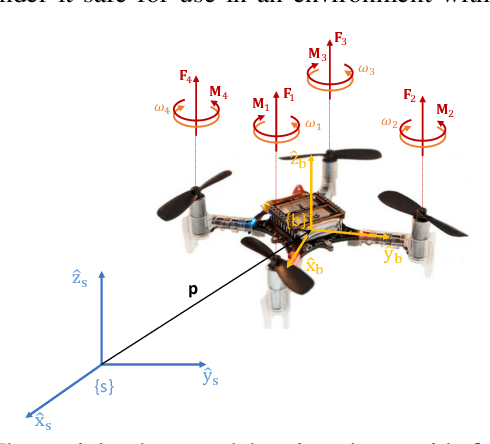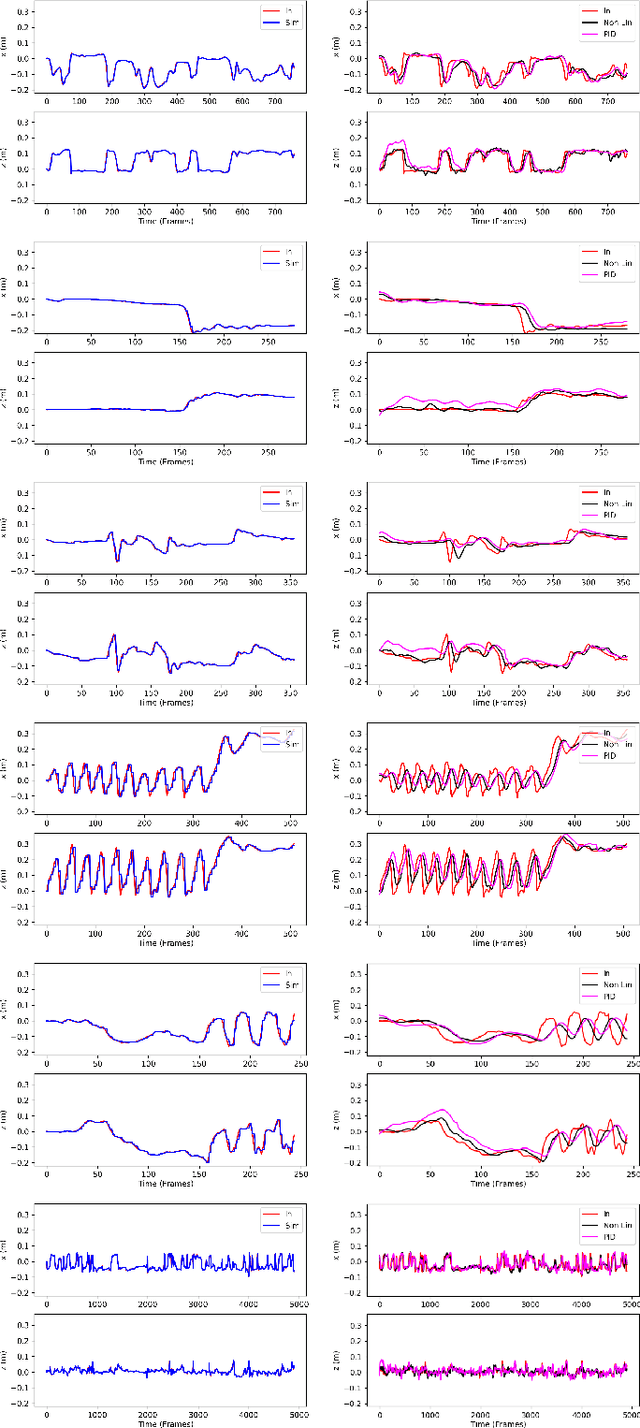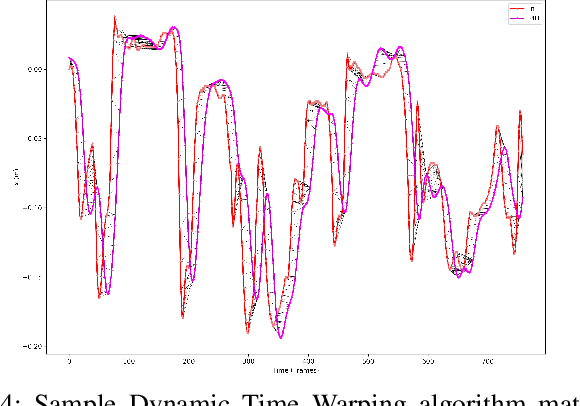Georgia Kouvoutsakis
Using Infant Limb Movement Data to Control Small Aerial Robots
Aug 11, 2022



Abstract:Promoting exploratory movements through contingent feedback can positively influence motor development in infancy. Our ongoing work gears toward the development of a robot-assisted contingency learning environment through the use of small aerial robots. This paper examines whether aerial robots and their associated motion controllers can be used to achieve efficient and highly-responsive robot flight for our purpose. Infant kicking kinematic data were extracted from videos and used in simulation and physical experiments with an aerial robot. The efficacy of two standard of practice controllers was assessed: a linear PID and a nonlinear geometric controller. The ability of the robot to match infant kicking trajectories was evaluated qualitatively and quantitatively via the mean squared error (to assess overall deviation from the input infant leg trajectory signals), and dynamic time warping algorithm (to quantify the signal synchrony). Results demonstrate that it is in principle possible to track infant kicking trajectories with small aerials robots, and identify areas of further development required to improve the tracking quality.
 Add to Chrome
Add to Chrome Add to Firefox
Add to Firefox Add to Edge
Add to Edge